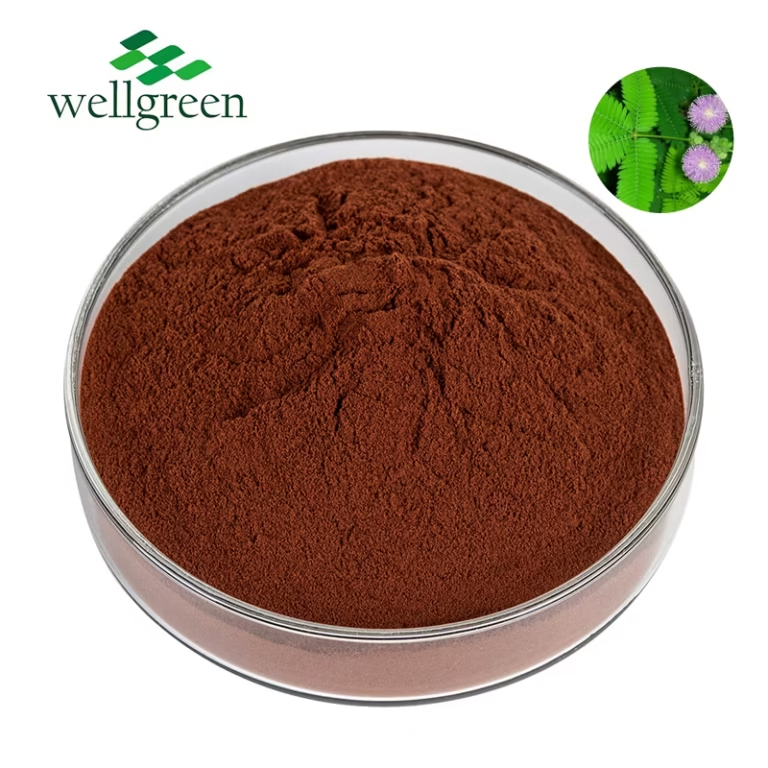
Mimosa hostilis is a significant plant deeply ingrained in the traditions of many Indigenous cultures across South America. For centuries, it has been employed by indigenous communities for its comprehensive spiritual and medicinal applications. The root bark, known as ayahuasca, is particularly revered for its hallucinogenic effects, believed to trigger profound insights that facilitate transformation.
Through rituals, the plant spirit of Mimosa hostilis is invoked, guiding individuals on a journey of self-discovery and connection with their inner selves. The knowledge concerning this sacred plant has been transmitted through generations, preserving the rich cultural heritage and knowledge of these communities.
Delving into MHRB Extract: The Mysteries of Mimosa Hostilis
Mimosa hostilis, a vibrant plant indigenous to the South American rainforests, has captured the attention of both researchers for centuries. This fascinating species harbors within its roots a potent compound known as MHRB, which has gained significant popularity in recent times.
MHRB extract is celebrated for its effects, often associated with spiritual exploration. Ancient practices suggest a long history of MHRB use in healing ceremonies.
- Researchers continue to investigate the active compounds of MHRB, seeking to illuminate its full depth of effects.
- The complexities surrounding MHRB usage require awareness. It is vital to consult with knowledgeable individuals before exploring any practices involving this powerful extract.
Exploring the Ethnobotanical Uses of Mimosa tenuiflora
Mimosa tenuiflori, commonly acknowledged as "sacred mimosa", holds a significant position within the ethnobotany knowledge of diverse cultural groups. Its multifaceted properties have been harnessed for centuries in traditional medicinal practices, as well as in rituals. The roots of this remarkable plant possess a rich repertoire of bioactive constituents believed to exhibit medicinal effects.
From curing ailments like inflammation to enhancing spiritual awareness, Mimosa tenuiflora has long been honored for its profound effect on human well-being.
Mimosa Hostilis Root Bark Chemistry and Pharmacology
Mimosa hostilis root bark has a complex chemical profile, primarily known for its abundant concentrations of alkaloids. Among these, N,N-Dimethyltryptamine and THH are particularly noteworthy. These molecules possess a range of pharmacological properties, including mind-altering effects. The bark contains diverse alkaloids, like norharmane, which may contribute to its comprehensive pharmacological profile.
The traditional uses of Mimosa hostilis root bark include a variety of medicinal purposes, particularly in South American cultures. However, it is crucial to recognize that scientific research on the effectiveness of these uses remains restricted.
Harnessing the Power of copyright with Mimosa Hostilis
Mimosa hostilis, a tree native to South America, has captured the interest of researchers and individuals alike for its potent chemicals, particularly dimethyltryptamine, or copyright. copyright is a powerful copyright substance known for producing intense visuals. By consuming the bark of Mimosa hostilis, one can explore the realms of copyright-induced experiences. It is essential to remember that copyright is a powerful substance and should be treated with reverence.
- Ethical use is paramount, and researching from experienced individuals or knowledgeable sources is highly suggested.
- The experience of copyright can be both transformative but also potentially overwhelming. It is crucial to prepare both mentally and physically for the consequences that may arise.
copyright from Mimosa hostilis presents a unique opportunity to explore the depths of consciousness, may leading to existential growth and understanding.
Moral dilemmas Using Mimosa Hostilis
The utilization of Mimosa hostilis for personal purposes raises a myriad of philosophical questions. While some argue that its cultural significance warrants respect and tolerance, others caution its use due to potential harmful consequences. It's crucial to evaluate this complex issue with care, taking into account the social contexts and potential side effects. A informed perspective is essential for navigating the ethical nuances surrounding Mimosa hostilis.
Raising Mimosa Hostilis: A Guide for Growers
Embarking on the journey of cultivating Mimosa Hostilis can be a rewarding experience for the dedicated grower. This enchanting plant, indigenous to tropical regions of the Americas, has gained significant attention in recent years due to its peculiar properties. Upon embarking on your cultivation endeavor, it is crucial to understand the specific needs this plant demands to thrive.
- Providing adequate sunlight is paramount for healthy Mimosa Hostilis growth. These plants prosper in direct sunlight, ideally receiving a minimum of eight hours per day.
- Maintaining well-drained soil is essential to prevent root rot, a common issue that can devastate your plants. A mixture of clayey soil with decomposed matter is suitable.
- Consistent watering is necessary, but be mindful not to overwater your Mimosa Hostilis. Allow the top inch of soil to harden before providing another watering.
The Shamanic Traditions Surrounding Mimosa Hostilis
Deep within the sacred forests of South America, the shrine of healing have been honored for generations. Among these potent allies is Mimosa Hostilis, a mysterious plant revered by the shamanic traditions of indigenoustribes. It contains within its roots a wellspring of power, guiding healers on their journeys into the otherworld.
The medicine men understand that Mimosa Hostilis is not simply a medicinal agent; it is a here bridge between worlds, connecting us to the powerful energies that flow through all of creation.
Addressing Legal Problems with Mimosa Hostilis
The legal status of mimosa hostilis can be from one country to another. That means that the legality of possessing, using, or raising this plant is reliant upon your particular geographic location.
Furthermore, laws and regulations concerning mimosa hostilis are constantly changing. It is therefore crucial that you thoroughly research the applicable legal framework in your region.
- Seeking advice from a legal professional who specializes in plant-based substances laws is highly suggested.
- Keeping informed about any changes to the law can help you stay clear of any potential legal difficulties.
Mimosa Hostilis and Spiritual Exploration: A Journey Inward unveiling
The ancient wisdom whispered through the rustling leaves of Mimosa Hostilis calls to voyagers on a mystical quest. Journeying upon this path is to awaken hidden dimensions within, where the veil between worlds thinns. It's a profound experience that enlightens the soul, revealing truths latent beneath the surface. As you blend with the essence of this sacred plant, be prepared for insights that reshape your worldview.
- Embrace the unknown with an open heart and a inquiring mind.
- Let go all expectations and allow yourself to be guided by the flow.
- Remember, this is a path of self-discovery. Trust in your own intuition.
The wisdom gained through Mimosa Hostilis echoes long after the experience has faded. It is a boon that can transform your life in profound and permanent ways.
Understanding the Challenges and Benefits of Mimosa Hostilis
Mimosa hostilis is a plant native to South America, gaining increasing attention for its potential pharmacological properties. While it contains valuable compounds like copyright, responsible for its psychoactive effects, it's crucial to approach this plant with awareness. Understanding both the risks and the positive aspects of Mimosa hostilis is essential for safe and informed use. Potential risks can include physical reactions, emphasizing the need for thorough research, responsible consumption, and a secure environment.
- It's important to consult with a healthcare professional before using Mimosa hostilis or any products derived from it.
- Proper dosage is crucial to minimize potential risks.
- Be aware of the legal status surrounding Mimosa hostilis in your area.
- Always prioritize safety and well-being when exploring the use of this plant.
